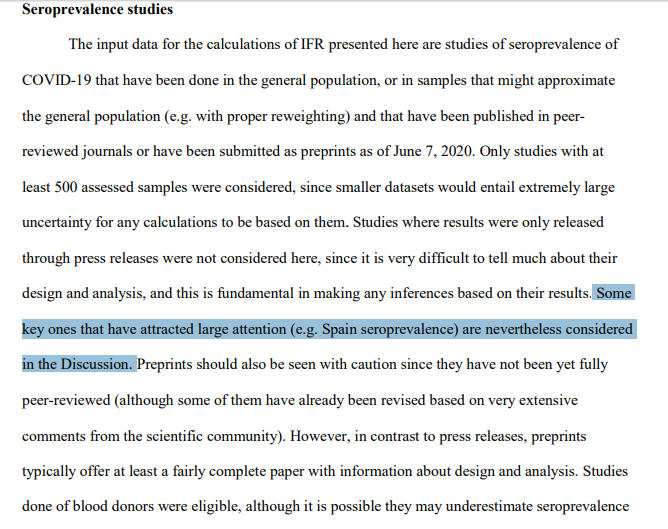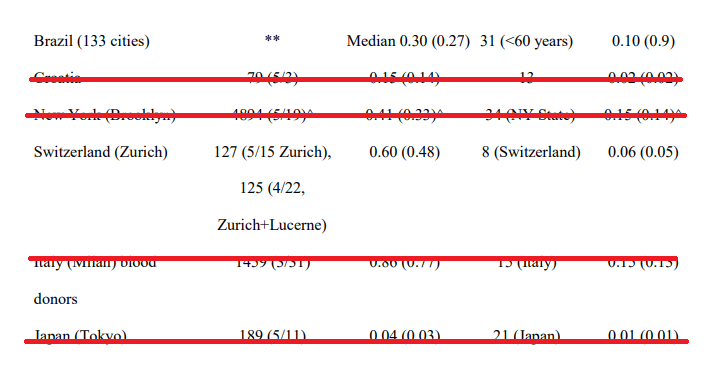This is good - hats off to him for acknowledging issues and working to improve
Let's see what's changed 1/n
- no clear search methodology
- strange inclusion/exclusion criteria
- odd 'adjustments' that only ever decrease IFR
- including strange studies
- excluding the most robust estimates
This is good, but not really adequate to improve the rigor of the paper
medrxiv.org/content/10.110…
These two figures, however, are not comparable
That's 18x lower than the lowest reasonable estimate of COVID-19 IFR
ncbi.nlm.nih.gov/pmc/articles/P…















